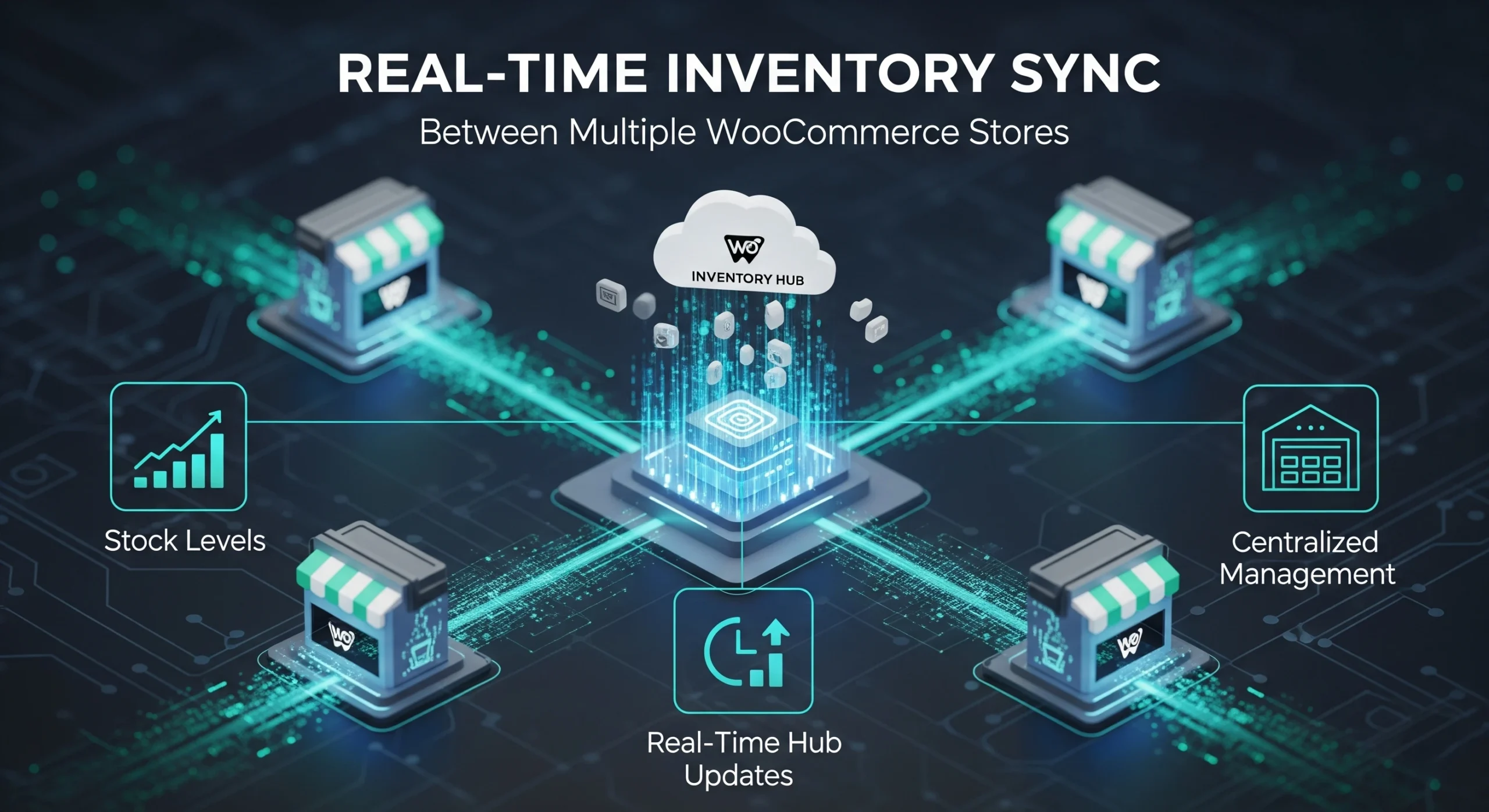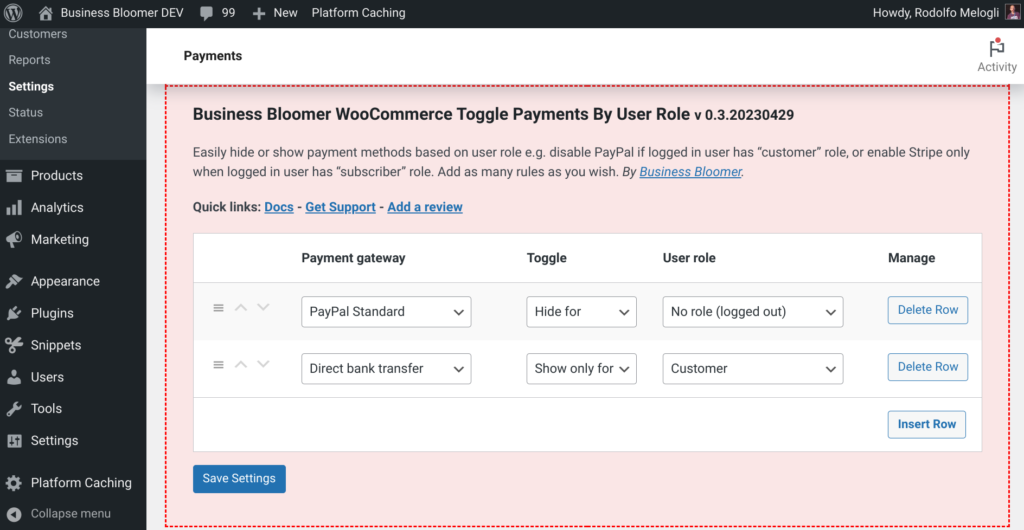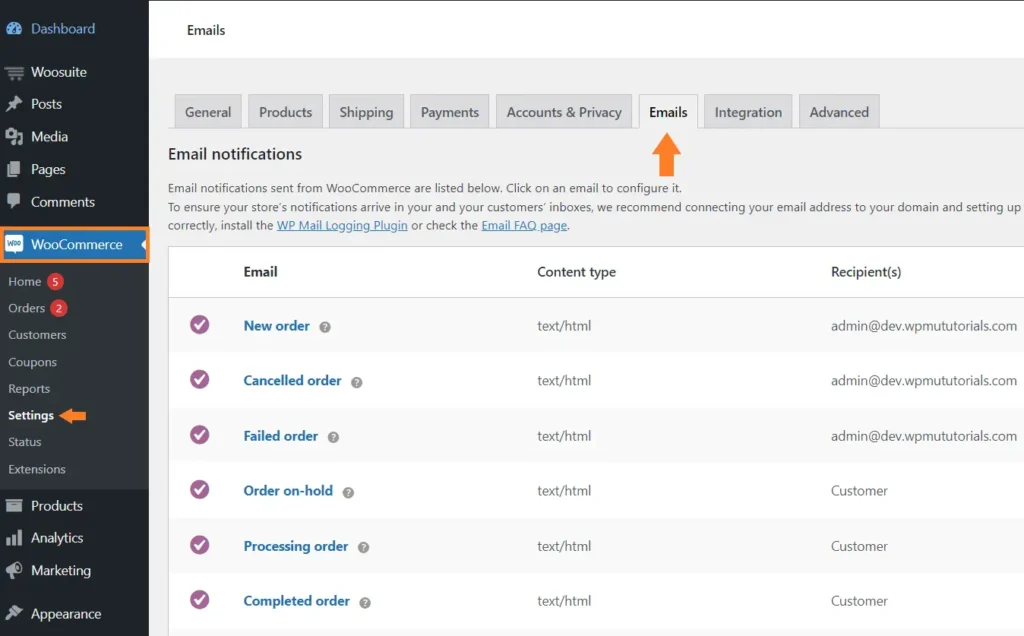Introduction
Managing multiple WooCommerce stores can be a logistical nightmare when it comes to inventory synchronization. Without proper syncing, you risk overselling, stock discrepancies, and frustrated customers.
In this guide, we’ll cover how to build a real-time inventory sync system between multiple WooCommerce stores using APIs, webhooks, and automation.
Why Real-Time Inventory Sync?
- Prevent overselling by syncing stock immediately.
- Manage multiple storefronts (e.g., regional stores).
- Update warehouse stock instantly after sales.
- Integrate with ERP or POS systems for unified inventory management.
Tools & Technologies
- WooCommerce REST API (or GraphQL)
- Webhooks (
woocommerce_update_product,woocommerce_reduce_order_stock) - Action Scheduler (for queued syncs)
- Optional: Redis or database triggers for high-traffic stores
- ERP/POS integrations (if required)
Step 1: Enable WooCommerce REST API
Each store needs an API key:
WooCommerce → Settings → Advanced → REST API → Add Key
- Permissions: Read/Write
You’ll get:
- Consumer Key
- Consumer Secret
Step 2: Create a Sync Plugin for Store A
Whenever stock changes, push updates to Store B using the REST API.
add_action('woocommerce_product_set_stock', 'sync_inventory_to_other_stores', 10, 1);
function sync_inventory_to_other_stores($product) {
$product_id = $product->get_id();
$stock_qty = $product->get_stock_quantity();
$remote_api_url = 'https://store-b.com/wp-json/wc/v3/products/' . $product_id;
$api_key = 'ck_xxxxx';
$api_secret = 'cs_xxxxx';
$response = wp_remote_post($remote_api_url, [
'headers' => [
'Authorization' => 'Basic ' . base64_encode($api_key . ':' . $api_secret),
'Content-Type' => 'application/json'
],
'body' => json_encode(['stock_quantity' => $stock_qty])
]);
if (is_wp_error($response)) {
error_log('Inventory sync failed: ' . $response->get_error_message());
}
}
This ensures whenever a product stock updates in Store A, it pushes the change to Store B.
Step 3: Handle Stock Reductions on Orders
Hook into woocommerce_reduce_order_stock to update all connected stores:
add_action('woocommerce_reduce_order_stock', 'sync_stock_after_order', 10, 1);
function sync_stock_after_order($order) {
foreach ($order->get_items() as $item) {
$product = $item->get_product();
sync_inventory_to_other_stores($product);
}
}
Step 4: Webhook Approach (Alternative)
Instead of polling or hooks, you can use WooCommerce Webhooks:
- Go to WooCommerce → Settings → Advanced → Webhooks
- Create a webhook for Product Updated or Order Created
- Target a custom endpoint in the other store
- Update inventory in real-time
This is more efficient for large catalogs.
Step 5: Handling Multiple Stores
If you have 3+ stores, create a central inventory service:
- One API gateway (middleware) to update all stores
- Each stock update triggers a broadcast to connected stores
- Use Action Scheduler for queued updates to avoid timeouts
Bonus: ERP or Central Database Sync
For enterprise setups:
- Sync WooCommerce with ERP (e.g., Odoo, NetSuite, SAP)
- Let ERP act as the inventory source of truth
- Use ERP APIs to push stock updates to all WooCommerce stores
Security Best Practices
- Use HTTPS and API authentication
- Validate product IDs before syncing
- Implement rate limits to avoid API overload
- Log every sync event for debugging




